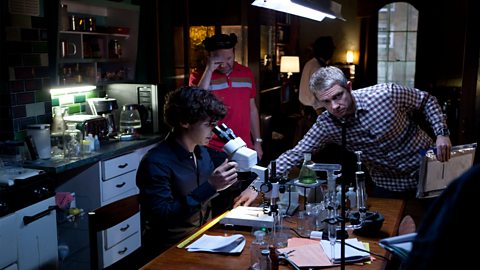Traditional narrative theory
Traditionally, narrative structures followed a formulaA set of rules for producing a media text. which was identified by the theorist Tzvetan Todorov.
Todorov studied classic fairy tales and stories.
He discovered that narratives moved forward in a chronological order with one action following after another. In other words, they have a clear beginning, middle and end.
Todorov also suggested that the characters in the narrative would be changed in some way through the course of the story and that this would be evident by the resolutionThe ending to a story..
This traditional story arc format is known as a linear narrative:
| Steps | What happens |
| 1 | The narrative starts with an equilibrium |
| 2 | An action or character disrupts the equilibrium |
| 3 | A quest to restore the equilibrium begins |
| 4 | The narrative continues to a climax |
| 5 | Resolution occurs and equilibrium is restored |
| Steps | 1 |
|---|---|
| What happens | The narrative starts with an equilibrium |
| Steps | 2 |
|---|---|
| What happens | An action or character disrupts the equilibrium |
| Steps | 3 |
|---|---|
| What happens | A quest to restore the equilibrium begins |
| Steps | 4 |
|---|---|
| What happens | The narrative continues to a climax |
| Steps | 5 |
|---|---|
| What happens | Resolution occurs and equilibrium is restored |
Most episodes of Sherlock follow this traditional narrative structure.
Sherlock and Watson are relaxing at the start of the episode, then an action or character will do something that creates a case for them to solve.
They begin their quest to find a solution and apprehend the villain.
The narrative continues until they confront the villain at the climax.
Once the disruption is resolved and the equilibriumA state of balance or calmness. is restored, Sherlock and Watson can relax again.
That is until another case comes to their attention in the next episode.

Behind the scenes photograph of Sherlock and Watson solving a case.
Unconventional narratives
Non-linear narratives and circular narratives have a structure that is not so straightforward.
A non-linear narrative can move backwards and forwards in time usually using a flashback technique. This is used in the film 500 days (of Summer) which follows a relationship but we see flashforwardA scene showing something that is yet to happen in a story. and flashbackA scene enacting something that happened in the past; the enactment of a character's memory of a past event. as the story progresses.
A circular narrative may begin at the end of the story and work its way back to the origins of the narrative. Circular narratives are often only understood clearly by the audience at the end of a film.
The film Slumdog Millionaire has a circular narrative which starts with the main character, Jamal, starring on Who Wants to be a Millionaire?
Over the course of the movie the narrative takes the viewer back to JamalÔÇÖs childhood and explains how he came to appear on the show and how he knows the correct answers.